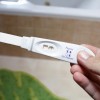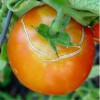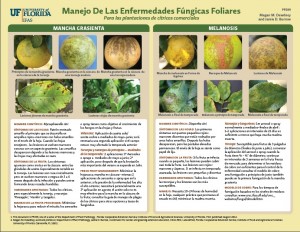 “In a recent study from Teenage Research Unlimited, researchers reported that teens spent $159 billion in 2005. My own experience raising three teens led me to believe that many of them spent their parents’ money in 2005.” This 2-page Family Album Radio transcript was written by Donna Davis, and published by the UF Department of Family Youth and Community Sciences, July 2012.
“In a recent study from Teenage Research Unlimited, researchers reported that teens spent $159 billion in 2005. My own experience raising three teens led me to believe that many of them spent their parents’ money in 2005.” This 2-page Family Album Radio transcript was written by Donna Davis, and published by the UF Department of Family Youth and Community Sciences, July 2012.
http://edis.ifas.ufl.edu/fm421
Author: dihagan
Teen Birth Rates Decline (FAR1208/FM420)
 “Parents and others who are concerned about teenagers having babies have reason to celebrate. According to the nonprofit research organization Child Trends, the teenage birth rate for 15-19 year olds is at the lowest point in over 40 years. This drop began in 1991 and has roceeded steadily so that it is now one-third lower than the 1991 peak. The other good news is that it continues to fall.” This 2-page Family Album Radio transcript was written by Suzanna Smith, and published by the UF Department of Family Youth and Community Sciences, July 2012.
“Parents and others who are concerned about teenagers having babies have reason to celebrate. According to the nonprofit research organization Child Trends, the teenage birth rate for 15-19 year olds is at the lowest point in over 40 years. This drop began in 1991 and has roceeded steadily so that it is now one-third lower than the 1991 peak. The other good news is that it continues to fall.” This 2-page Family Album Radio transcript was written by Suzanna Smith, and published by the UF Department of Family Youth and Community Sciences, July 2012.
http://edis.ifas.ufl.edu/fm420
Helping Your Child Adjust to Child Care: Child Care 3 (FAR0309/FM419)
 “Almost 13 million of the 18 million children younger than five years of age in the U.S. are in some form of regular childcare (Overturf Johnson, 2002). This means that millions of parents are finding ways to help their children adjust to being away from Mom or Dad and get used to a new routine and situation. Child development experts recommend a number of strategies, particularly in the early weeks of care.” This 2-page Family Album Radio transcript was written by Suzanna Smith, and published by the UF Department of Family Youth and Community Sciences, July 2012.
“Almost 13 million of the 18 million children younger than five years of age in the U.S. are in some form of regular childcare (Overturf Johnson, 2002). This means that millions of parents are finding ways to help their children adjust to being away from Mom or Dad and get used to a new routine and situation. Child development experts recommend a number of strategies, particularly in the early weeks of care.” This 2-page Family Album Radio transcript was written by Suzanna Smith, and published by the UF Department of Family Youth and Community Sciences, July 2012.
http://edis.ifas.ufl.edu/fm419
Starting Child Care: Child Care 2 (FAR0308/FM418)
 “Many parents have suffered the heart-wrenching moment of dropping their baby at a new child care setting, only to have them cling and cry. If your child is starting child care, you can help make the transition easier by following a few guidelines from child development experts to help you and your child prepare for this change” This 2-page Family Album Radio transcript was written by Suzanna Smith, and published by the UF Department of Family Youth and Community Sciences, July 2012.
“Many parents have suffered the heart-wrenching moment of dropping their baby at a new child care setting, only to have them cling and cry. If your child is starting child care, you can help make the transition easier by following a few guidelines from child development experts to help you and your child prepare for this change” This 2-page Family Album Radio transcript was written by Suzanna Smith, and published by the UF Department of Family Youth and Community Sciences, July 2012.
http://edis.ifas.ufl.edu/fm418
Old Maid No More (FAR3038/FM416)
 “Twenty years ago, women were being warned that, according to demographic research, if they didn’t marry by the time they were in their early twenties, they would likely live out their lives unwed. As a child, I was even told that “those” women became “old maids,” and I feared a similar fate. Fast-forward to 2006, and the news is quite different.” This 2-page Family Album Radio transcript was written by Donna Davis, and published by the UF Department of Family Youth and Community Sciences, July 2012.
“Twenty years ago, women were being warned that, according to demographic research, if they didn’t marry by the time they were in their early twenties, they would likely live out their lives unwed. As a child, I was even told that “those” women became “old maids,” and I feared a similar fate. Fast-forward to 2006, and the news is quite different.” This 2-page Family Album Radio transcript was written by Donna Davis, and published by the UF Department of Family Youth and Community Sciences, July 2012.
http://edis.ifas.ufl.edu/fm416
Playing It Safe with Play Equipment (FAR0086/FM415)
 “Raising my rough-and-tumble children at times took superhuman energy, patience, and constant supervision. Even the joyful vision of a playground could be daunting when the swing was used as a human slingshot and the slide had 101 uses, of which only one was acceptable. I’m sure many parents can relate to the fear of the unknown dangers on the playground.” This 2-page Family Album Radio transcript was written by Donna Davis, and published by the UF Department of Family Youth and Community Sciences, July 2012.
“Raising my rough-and-tumble children at times took superhuman energy, patience, and constant supervision. Even the joyful vision of a playground could be daunting when the swing was used as a human slingshot and the slide had 101 uses, of which only one was acceptable. I’m sure many parents can relate to the fear of the unknown dangers on the playground.” This 2-page Family Album Radio transcript was written by Donna Davis, and published by the UF Department of Family Youth and Community Sciences, July 2012.
http://edis.ifas.ufl.edu/fm415
Sun Protection for Your Children (FAR0084/FM412)
 “My children were all born during the summer months, and as we gradually spent more and more time outside, I wondered how best to protect them from the hot summer sun.” This 2-page Family Album Radio transcript was written by Suzanna Smith, and published by the UF Department of Family Youth and Community Sciences, July 2012.
“My children were all born during the summer months, and as we gradually spent more and more time outside, I wondered how best to protect them from the hot summer sun.” This 2-page Family Album Radio transcript was written by Suzanna Smith, and published by the UF Department of Family Youth and Community Sciences, July 2012.
http://edis.ifas.ufl.edu/fm412
Quick Sheet: Insecticides and Miticides Recommended for Use in the Florida Citrus Pest Management Guide (ENY854/IN807)
 This document is a two-page quick reference guide to citrus insecticides and miticides recommended in the Florida Citrus Pest Management Guide, their effects on important citrus pests, and their natural enemies. Written by M.E. Rogers, P.A. Stansly, L.L. Stelinski, and J.D. Yates, and published by the UF Department of Entomology and Nematology, January 2012.
This document is a two-page quick reference guide to citrus insecticides and miticides recommended in the Florida Citrus Pest Management Guide, their effects on important citrus pests, and their natural enemies. Written by M.E. Rogers, P.A. Stansly, L.L. Stelinski, and J.D. Yates, and published by the UF Department of Entomology and Nematology, January 2012.
http://edis.ifas.ufl.edu/in807
Preventing Foodborne Illness: Shigellosis (FSHN0517/FS128)
 Shigellosis occurs when virulent Shigella organisms are consumed and invade the intestinal mucosa, resulting in tissue destruction. Most Shigella infections are spread by stools or soiled fingers of an infected person to the mouth of another person when basic hygiene and handwashing are not properly done. This 5-page fact sheet was written by Keith R. Schneider, Soohyoun Ahn, and Renée M. Goodrich-Schneider, and published by the UF Department of Food Science and Human Nutrition, July 2012.
Shigellosis occurs when virulent Shigella organisms are consumed and invade the intestinal mucosa, resulting in tissue destruction. Most Shigella infections are spread by stools or soiled fingers of an infected person to the mouth of another person when basic hygiene and handwashing are not properly done. This 5-page fact sheet was written by Keith R. Schneider, Soohyoun Ahn, and Renée M. Goodrich-Schneider, and published by the UF Department of Food Science and Human Nutrition, July 2012.
http://edis.ifas.ufl.edu/fs128
Preventing Foodborne Illness: Campylobacteriosis (FSHN032/FS098)
 Over 800,000 cases per year of diarrheal disease in the United States were linked to Campylobacter, being ranked No. 4 in the pathogens causing foodborne illnesses. Campylobacter is also responsible for 15% of foodborne illness-related hospitalizations, and 6% of foodborne illness-related deaths. This 5-page fact sheet was written by Soohyoun Ahn, Renée M. Goodrich-Schneider, and Keith R. Schneider, and published by the UF Department of Food Science and Human Nutrition, July 2012.
Over 800,000 cases per year of diarrheal disease in the United States were linked to Campylobacter, being ranked No. 4 in the pathogens causing foodborne illnesses. Campylobacter is also responsible for 15% of foodborne illness-related hospitalizations, and 6% of foodborne illness-related deaths. This 5-page fact sheet was written by Soohyoun Ahn, Renée M. Goodrich-Schneider, and Keith R. Schneider, and published by the UF Department of Food Science and Human Nutrition, July 2012.
http://edis.ifas.ufl.edu/fs098
Postharvest Quality and Decay Incidence among Tomato Fruit as Affected by Weather and Cultural Practices. (PP294)
 Postharvest decay losses for field-grown, fresh-market tomatoes are usually associated with harvests that occur when fields are wet and warm. During periods of persistently wet fields, decay pathogens infect damaged fruit on the plant as well as injuries to petioles and stems. Review of all reports and photos implicated excessive water in fruit rather than air temperatures as the primary predisposition. Excessive water in fruit is possible at virtually any time of the season and can appear at times of cold as well as warm field temperatures. This 8-page fact sheet was written by Jerry A. Bartz, Steven A. Sargent, and John W. Scott, and published by the UF Department of Plant Pathology, July 2012.
Postharvest decay losses for field-grown, fresh-market tomatoes are usually associated with harvests that occur when fields are wet and warm. During periods of persistently wet fields, decay pathogens infect damaged fruit on the plant as well as injuries to petioles and stems. Review of all reports and photos implicated excessive water in fruit rather than air temperatures as the primary predisposition. Excessive water in fruit is possible at virtually any time of the season and can appear at times of cold as well as warm field temperatures. This 8-page fact sheet was written by Jerry A. Bartz, Steven A. Sargent, and John W. Scott, and published by the UF Department of Plant Pathology, July 2012.
http://edis.ifas.ufl.edu/pp294
9 Habilidades importantes de la comunicacion para cada relacion (FCS2315Span/FY1333)
 La comunicación efectiva es esencial para las relaciones exitosas. Investigadores y terapistas han encontrado que hay al menos nueve habilidades que pueden ayudar a las parejas a aprender a hablar efectivamente acerca de problemas importantes. Si aprende bien estas nueve habilidades puede ayudar a poner las relaciones en una trayectoria positiva al éxito. This 4-page fact sheet was written by Victor William Harris, and published by the UF Department of Family Youth and Community Sciences, July 2012.
La comunicación efectiva es esencial para las relaciones exitosas. Investigadores y terapistas han encontrado que hay al menos nueve habilidades que pueden ayudar a las parejas a aprender a hablar efectivamente acerca de problemas importantes. Si aprende bien estas nueve habilidades puede ayudar a poner las relaciones en una trayectoria positiva al éxito. This 4-page fact sheet was written by Victor William Harris, and published by the UF Department of Family Youth and Community Sciences, July 2012.
http://edis.ifas.ufl.edu/fy1333
10 Reglas del conflicto constructivo (FCS2314Span/FY1332)
 Determinar cómo manejamos los conflictos – constructivamente o destructivamente- es un buen camino para saber que tan funcionales o disfuncionales actuamos en las relaciones. Tómese un minuto para contestar la prueba que se encuentra a continuación para ver si maneja los conflictos de una forma constructiva o destructiva. Esto le ayudará a darse cuenta que está haciendo bien y en cuáles habilidades podría trabajar un poco más. This 4-page fact sheet was written by Victor William Harris, and published by the UF Department of Family Youth and Community Sciences, July 2012.
Determinar cómo manejamos los conflictos – constructivamente o destructivamente- es un buen camino para saber que tan funcionales o disfuncionales actuamos en las relaciones. Tómese un minuto para contestar la prueba que se encuentra a continuación para ver si maneja los conflictos de una forma constructiva o destructiva. Esto le ayudará a darse cuenta que está haciendo bien y en cuáles habilidades podría trabajar un poco más. This 4-page fact sheet was written by Victor William Harris, and published by the UF Department of Family Youth and Community Sciences, July 2012.
http://edis.ifas.ufl.edu/fy1332
Ocho necesidades de la pareja, el padre y el hijo (FCS2313Span/FY1331)
 Cuando las personas, las parejas y los padres aprenden cómo satisfacer sus necesidades personales consistentemente, pueden ayudar a otros y a sus hijos a satisfacer sus propias necesidades. This 4-page fact sheet was written by Victor William Harris, and published by the UF Department of Family Youth and Community Sciences, July 2012.
Cuando las personas, las parejas y los padres aprenden cómo satisfacer sus necesidades personales consistentemente, pueden ayudar a otros y a sus hijos a satisfacer sus propias necesidades. This 4-page fact sheet was written by Victor William Harris, and published by the UF Department of Family Youth and Community Sciences, July 2012.
http://edis.ifas.ufl.edu/fy1331
Identificacion de los sintomas del cancro citrico y procedimientos de descontaminacion (PP214SP/PP138)
 El cancro cítrico es una seria enfermedad de los cítricos. La mayoría de los cultivos de cítricos son susceptibles, la toronja, la lima mejicana y algunas naranjas tempranas son las más susceptibles. Una infección severa puede causar defoliación, una muerte regresiva de la rama, una decadencia general del árbol, una caída prematura de la fruta, y manchas en la misma. Los árboles severamente infectados se vuelven débiles, improductivos y no rentables. This 5-page fact sheet was written by Mongi Zekri, Megan Dewdney, Jamie Burrow, and Pamela Roberts, and published by the UF Department of Plant Pathology, August 2012.
El cancro cítrico es una seria enfermedad de los cítricos. La mayoría de los cultivos de cítricos son susceptibles, la toronja, la lima mejicana y algunas naranjas tempranas son las más susceptibles. Una infección severa puede causar defoliación, una muerte regresiva de la rama, una decadencia general del árbol, una caída prematura de la fruta, y manchas en la misma. Los árboles severamente infectados se vuelven débiles, improductivos y no rentables. This 5-page fact sheet was written by Mongi Zekri, Megan Dewdney, Jamie Burrow, and Pamela Roberts, and published by the UF Department of Plant Pathology, August 2012.
http://edis.ifas.ufl.edu/pp138
Mancha negra de los citricos (PP295)

Este documento es una hoja de dos páginas ilustrativas para la identificación de la mancha negra de los cítricos. This 2-page fact sheet was written by Megan M. Dewdney and Natalia A. Peres, and published by the UF Department of Plant Pathology, August 2012. http://edis.ifas.ufl.edu/pp295
Enfermedades Exoticos de los Citricos (PP296)
 Este documento es una hoja de dos páginas ilustrativas para la identificación de las enfermedades exóticas de los cítricos. This 2-page fact sheet was written by M. M. Dewdney, J. D. Burrow, M.E. Rogers, and T. M. Spann, and published by the UF Department of Plant Pathology, August 2012.
Este documento es una hoja de dos páginas ilustrativas para la identificación de las enfermedades exóticas de los cítricos. This 2-page fact sheet was written by M. M. Dewdney, J. D. Burrow, M.E. Rogers, and T. M. Spann, and published by the UF Department of Plant Pathology, August 2012.
http://edis.ifas.ufl.edu/pp296
Living with Diabetes (FCS8706/FY334)
 Diabetes is a disease that affects more than 26 million Americans. Although there is no cure for type 1 or type 2 diabetes, diabetes can be managed with the proper care. If you have diabetes, the best way to live well is to learn about the disease and work with your doctor to develop a healthy living plan that is right for you. This 4-page fact sheet was written by Nancy J. Gal and Linda B. Bobroff, and published by the UF Department of Family Youth and Community Sciences, July 2012.
Diabetes is a disease that affects more than 26 million Americans. Although there is no cure for type 1 or type 2 diabetes, diabetes can be managed with the proper care. If you have diabetes, the best way to live well is to learn about the disease and work with your doctor to develop a healthy living plan that is right for you. This 4-page fact sheet was written by Nancy J. Gal and Linda B. Bobroff, and published by the UF Department of Family Youth and Community Sciences, July 2012.
http://edis.ifas.ufl.edu/fy334
Enfermedades fungicas foliares de los citricos para los patios y zonas residenciales (PP297)
 Este documento es una hoja de dos páginas ilustrativas para la identificación de las enfermedades fúngicas foliares de los cítricos. This 2-page fact sheet was written by M. M. Dewdney and J. D. Burrow, and published by the UF Department of Plant Pathology, August 2012.
Este documento es una hoja de dos páginas ilustrativas para la identificación de las enfermedades fúngicas foliares de los cítricos. This 2-page fact sheet was written by M. M. Dewdney and J. D. Burrow, and published by the UF Department of Plant Pathology, August 2012.
http://edis.ifas.ufl.edu/pp297
Manejo de las enfermedades fungicas foliares para las plantaciones de citricos comerciales (PP299)
 Este documento es una hoja de dos páginas ilustrativas para la identificación y manejo de las enfermedades fúngicas foliares de los cítricos a nivel comercial. This 2-page fact sheet was written by Megan M. Dewdney and Jamie D. Burrow, and published by the UF Department of Plant Pathology, August 2012.
Este documento es una hoja de dos páginas ilustrativas para la identificación y manejo de las enfermedades fúngicas foliares de los cítricos a nivel comercial. This 2-page fact sheet was written by Megan M. Dewdney and Jamie D. Burrow, and published by the UF Department of Plant Pathology, August 2012.
http://edis.ifas.ufl.edu/pp299